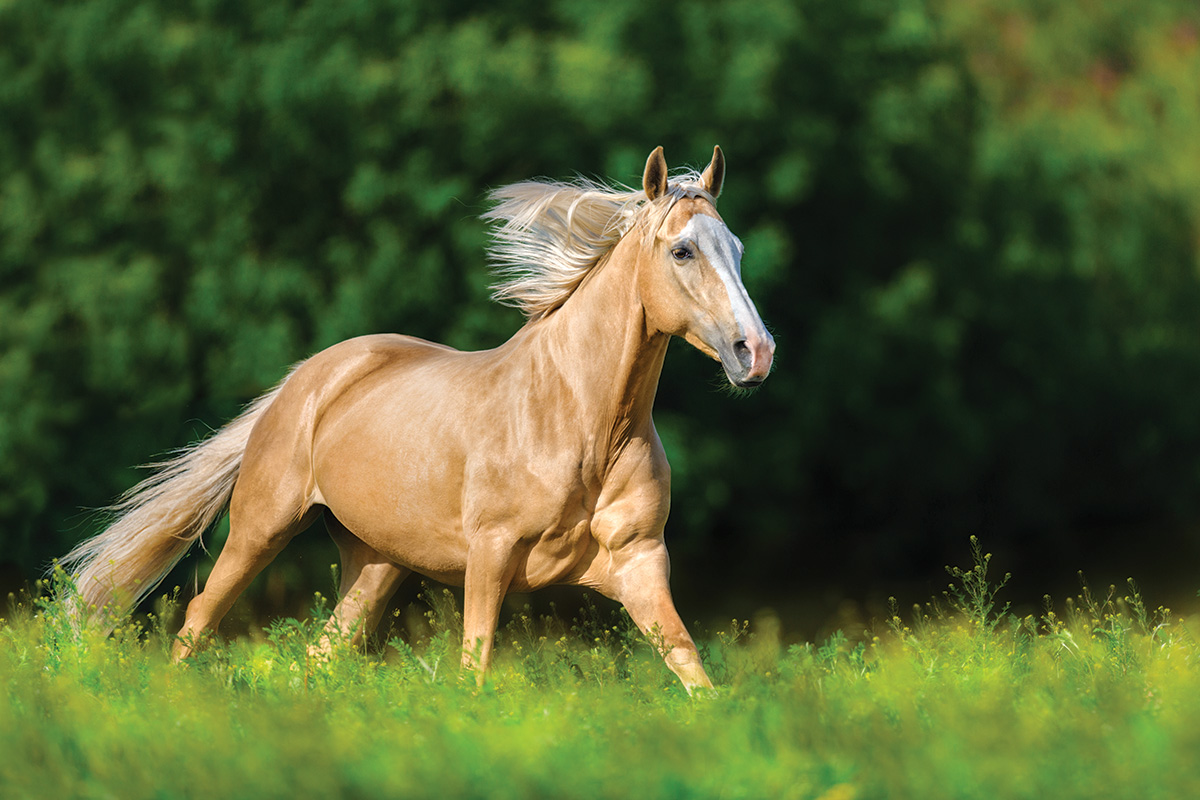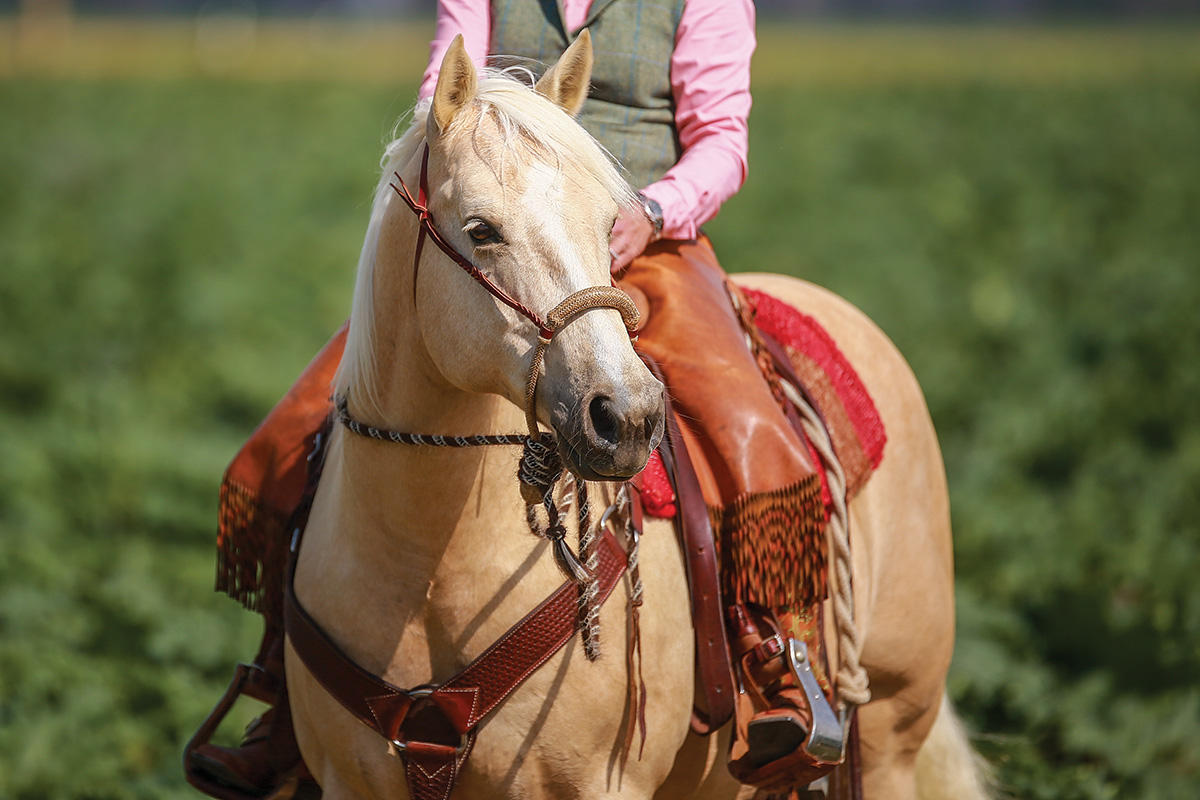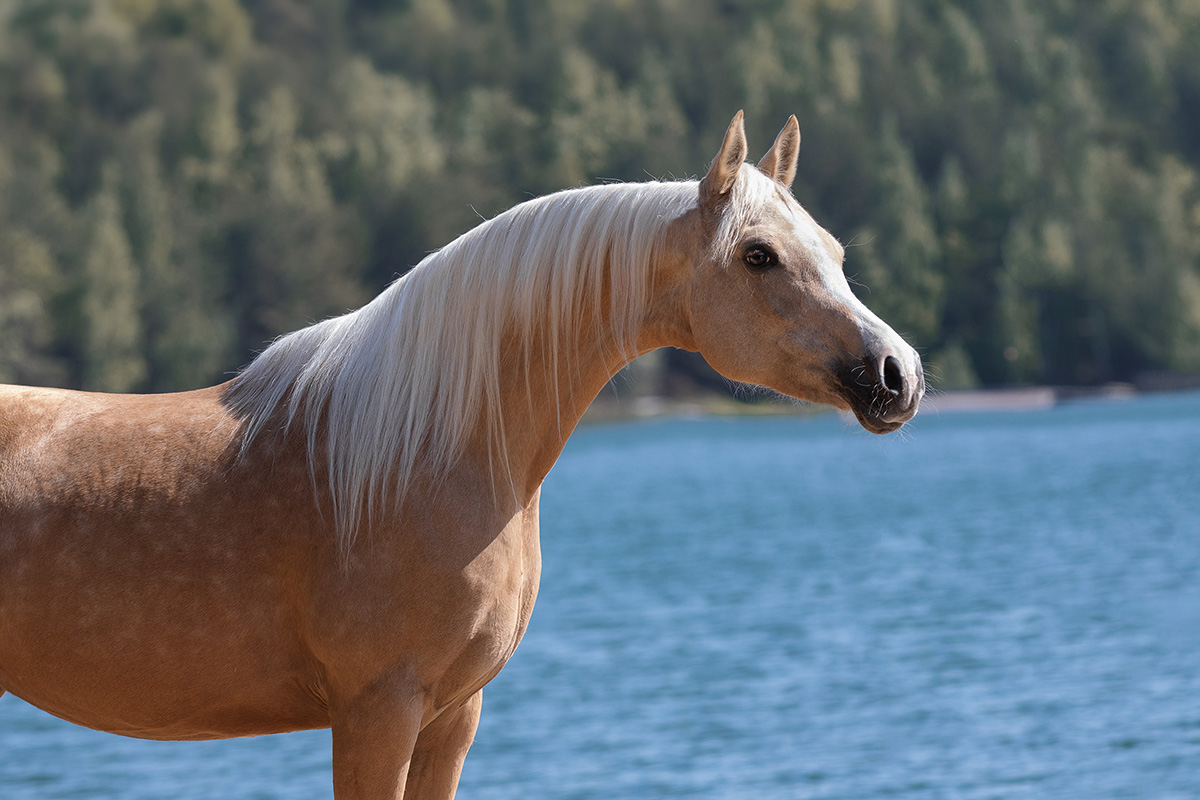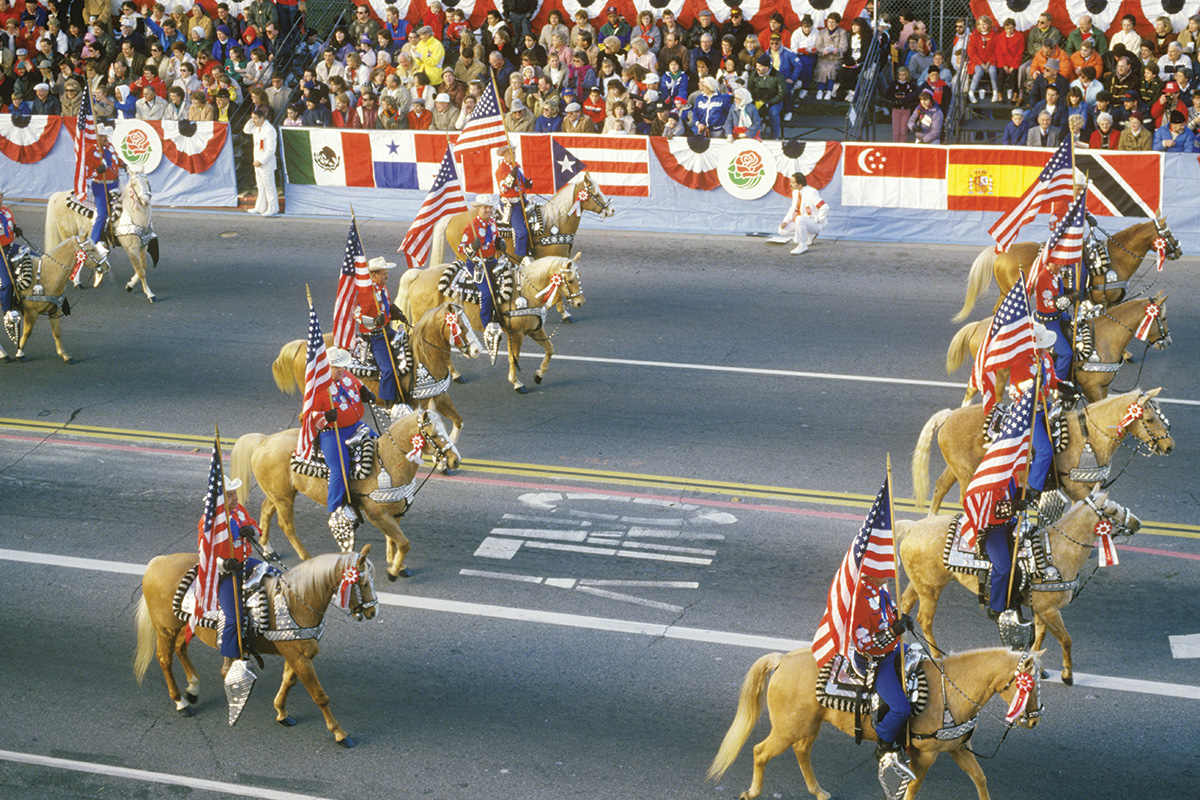There is something about a Palomino horse that gets people’s attention. That could be why Xena the Warrior Princess, cowboy star Roy Rogers, and even Wilbur of Mister Ed fame had one. Let’s face it: It’s hard to look away from a golden horse with an ivory mane and tail. Of all the equine colors out there, the Palomino is probably the most recognizable. Even people with virtually no experience in horses know a Palomino when they see one.

Golden History of the Palomino Color
Equine historians believe that Palomino coloring was present in Arabian and Barb horses, which allowed it to spread through Europe as these breeds moved to the west. When the Spaniards came to the Americas with horses in tow, they brought Palominos to the New World.

Since then, this golden color has been seen among horses that descended from the original Spanish equines that populated North America. The breed with the most Palominos today is the most numerous in the USA, the American Quarter Horse.
Associations |
What Is the Palomino Horse?
According to the Palomino Horse Breeders Association (PHBA), a Palomino has an ideal body coat that is close to the color of a United States gold coin. The color must be solid.
Not allowed are horses with a brown or black dorsal stripe along the spine; alternating bands of lighter and darker hairs running around the legs (zebra stripes) or across the withers (wither or neck stripes); spotting and/or coat characteristics typical of Paints, pintos, Appaloosas, cremellos and perlinos; or horses with white hairs interspersed within the coat that is associated with gray.
The horse’s skin must be dark-colored, and the mane and tail must be a minimum of 75 percent white. The iris of the eyes may be black, brown, blue or hazel, if those colors are allowed by the horse’s breed registry. Both eyes can be different colors.
Palominos also have a height requirement: To be registered with the PHBA, horses must stand between 14 and 17 hands tall.

Of course, Palomino is a color, not a breed. The PHBA recognizes dual registration among the following breed registries, relative to the registration of Palomino horses: Holsteiner, American Paint Horse, American Quarter Horse, American Saddlebred Horse, American Warmblood, Andalusian, Lusitano, Appaloosa, Arabian, Half-Arabian, Missouri Fox Trotter, Morab, Morgan, Mountain Pleasure Horse, Pinto, Quarab, Racking Horse, Rocky Mountain Horse or Thoroughbred.

Palomino genetics can be found in each of these breeds. But a Palomino horse that is not registered with the associations above can still receive PHA registration if certain color or other requirements are met. The PHBA will register Palominos of any breed as well as grade horses, as long as they have Palomino coloring.
Showing Off That Palomino Color
Palominos are attention-getters, which is probably why they are popular as parade horses. You’ll see them every year in the famous Rose Bowl Parade on New Year’s Day among the horses of mounted posses, drill teams and equestrian clubs. Because Palominos are such a visually striking horses, they are naturals for the show ring. Shows exclusively for Palominos are regularly held by the PHBA throughout the United States.

A PHBA World Show is held annually, and a registration and transfer special is held at the beginning of each year, featuring many Amateur, Youth and Novice events. The club’s Palomino Incentive Program is designed to reward Palomino owners with cash payouts for achievements their horses make in the Open and Amateur divisions.
To help encourage owners to spend more time with their Palominos, the PHBA also sponsors the Recreational Horseback Riding Program, which recognizes those who ride and drive Palominos in any discipline. Owners log the time they spend riding and driving, and receive certificates based on the number of miles covered in a year.
For many people, Palomino is the quintessential horse color. It’s the horse of parades, of mounted officers and of ancient art. Combine that stunning color with the genetics of each breed the Palomino represents, and you have a golden steed that captures the imagination of all who see it.
Palomino Horse Desktop Wallpapers>>
This article about the Palomino horse appeared in the July 2022 issue of Horse Illustrated magazine. Click here to subscribe!






